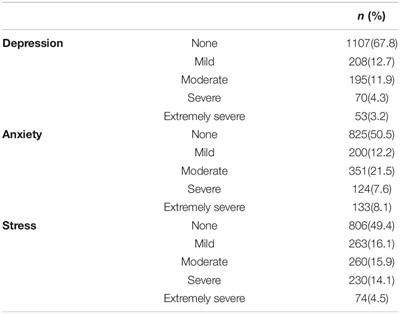
Share on Pinterest
Nabi Tang/Stocksy United
What is EFT tapping?
Emotional freedom technique (EFT) is an alternative treatment for physical pain and emotional distress. It’s also referred to as tapping or psychological acupressure.
People who use this technique believe tapping the body can create a balance in your energy system and treat pain. According to its developer, Gary Craig, a disruption in energy is the cause of all negative emotions and pain.
Though still being researched, EFT tapping has been used to treat people with anxiety and people with post-traumatic stress disorder (PTSD).
How does EFT tapping work?
Similar to acupuncture, EFT focuses on the meridian points — or energy hot spots — to restore balance to your body’s energy. It’s believed that restoring this energy balance can relieve symptoms a negative experience or emotion may have caused.
Based on Chinese medicine, meridian points are thought of as areas of the body energy flows through. These pathways help balance energy flow to maintain your health. Any imbalance can influence disease or sickness.
Acupuncture uses needles to apply pressure to these energy points. EFT uses fingertip tapping to apply pressure.
Proponents say the tapping helps you access your body’s energy and send signals to the part of the brain that controls stress. They claim that stimulating the meridian points through EFT tapping can reduce the stress or negative emotion you feel from your issue, ultimately restoring balance to your disrupted energy.
EFT tapping in 5 steps
EFT tapping can be divided into five steps. If you have more than one issue or fear, you can repeat this sequence to address it and reduce or eliminate the intensity of your negative feeling.
1. Identify the issue
In order for this technique to be effective, you must first identify the issue or fear you have. This will be your focal point while you’re tapping. Focusing on only one problem at a time is purported to enhance your outcome.
2. Test the initial intensity
After you identify your problem area, you need to set a benchmark level of intensity. The intensity level is rated on a scale from 0 to 10, with 10 being the worst or most difficult. The scale assesses the emotional or physical pain and discomfort you feel from your focal issue.
Establishing a benchmark helps you monitor your progress after performing a complete EFT sequence. If your initial intensity was 10 prior to tapping and ended at 5, you’d have accomplished a 50 percent improvement level.
3. The setup
Prior to tapping, you need to establish a phrase that explains what you’re trying to address. It must focus on two main goals:
- acknowledging the issues
- accepting yourself despite the problem
The common setup phrase is: “Even though I have this [fear or problem], I deeply and completely accept myself.”
You can alter this phrase so that it fits your problem, but it must not address someone else’s. For example, you can’t say, “Even though my mother is sick, I deeply and completely accept myself.” You have to focus on how the problem makes you feel in order to relieve the distress it causes. It’s better to address this situation by saying, “Even though I’m sad my mother is sick, I deeply and completely accept myself.”
4. EFT tapping sequence
The EFT tapping sequence is the methodic tapping on the ends of nine meridian points.
There are 12 major meridians that mirror each side of the body and correspond to an internal organ. However, EFT mainly focuses on these nine:
- karate chop (KC): small intestine meridian
- top of head (TH): governing vessel
- eyebrow (EB): bladder meridian
- side of the eye (SE): gallbladder meridian
- under the eye (UE): stomach meridian
- under the nose (UN): governing vessel
- chin (Ch): central vessel
- beginning of the collarbone (CB): kidney meridian
- under the arm (UA): spleen meridian
Begin by tapping the karate chop point while simultaneously reciting your setup phrase three times. Then, tap each following point seven times, moving down the body in this ascending order:
- eyebrow
- side of the eye
- under the eye
- under the nose
- chin
- beginning of the collarbone
- under the arm
After tapping the underarm point, finish the sequence at the top of the head point.
While tapping the ascending points, recite a reminder phrase to maintain focus on your problem area. If your setup phrase is, “Even though I’m sad my mother is sick, I deeply and completely accept myself,” your reminder phrase can be, “The sadness I feel that my mother is sick.” Recite this phrase at each tapping point. Repeat this sequence two or three times.
5. Test the final intensity
At the end of your sequence, rate your intensity level on a scale from 0 to 10. Compare your results with your initial intensity level. If you haven’t reached 0, repeat this process until you do.
Does EFT tapping work?
EFT has been used to effectively treat war veterans and active military with PTSD. In a 2013 study, researchers studied the impact of EFT tapping on veterans with PTSD against those receiving standard care.
Within a month, participants receiving EFT coaching sessions had significantly reduced their psychological stress. In addition, more than half of the EFT test group no longer fit the criteria for PTSD.
There are also some success stories from people with anxiety using EFT tapping as an alternative treatment.
A 2016 review compared the effectiveness of using EFT tapping over standard care options for anxiety symptoms. The study concluded there was a significant decrease in anxiety scores compared to participants receiving other care. However, further research is needed to compare EFT treatment with other cognitive therapy techniques.
The bottom line
EFT tapping is an alternative acupressure therapy treatment used to restore balance to your disrupted energy. It’s been an authorized treatment for war veterans with PTSD, and it’s demonstrated some benefits as a treatment for anxiety, depression, physical pain, and insomnia.
While there are some success stories, researchers are still investigating its effectiveness on other disorders and illnesses. Continue to seek traditional treatment options. However, if you decide to pursue this alternative therapy, consult with your doctor first to reduce the likelihood of injury or worsening symptoms.
Humans are always looking for better ways to relieve stress. Medications may work, but they have side effects. Many people seek alternative solutions, such as EFT tapping. EFT stands for Emotional Freedom Techniques, and users say that this simple technique helps them feel better quickly.
EFT tapping has roots in the 1970s when several doctors began stimulating acupressure points to help their patients deal with stress, fear, and phobias. One of them, patented by Dr. Roger Callahan, is called Thought Field Therapy. Later Gary Craig simplified the process and made it available to the public under the EFT name.
The Philosophy Behind Tapping
Disciplines such as yoga, massage, tai chi, and acupuncture rely on a body-mind connection, and evidence shows that these interventions can relieve stress, depression, anxiety, and other psychological disorders. EFT tapping falls into the category of body-centered therapies.
Tapping draws on the ancient Chinese practice of acupuncture, which teaches that the body’s energy travels along specific pathways. Certain points on these pathways are stimulated to improve the flow of energy. The stimulation is done by inserting very thin needles (acupuncture) or by applying pressure ( acupressure).
Studies show that acupuncture is effective for some conditions. Some scientists believe that it works because it stimulates the central nervous system and causes the body to release helpful chemicals. EFT tapping stimulates acupoints by touch rather than by the use of needles, making it similar to acupressure.
How Is EFT Tapping Performed?
If you want to use EFT tapping, you can perform your own tapping sequences or you can work with a practitioner. EFT tapping is easy to use as a self-help technique because you can do it any time you feel the need. A practitioner can provide in-depth help if needed.
EFT tapping sessions follow a set sequence:
- Begin by stating what is on your mind and rating your distress on a scale of 0 to 10
- Speak your “set-up statement,” which identifies the issue and includes a statement of self-acceptance
- Begin the tapping sequence, using your fingers to tap on the specified sites
- As you tap, use a reminder phrase to stay focused on your problem area
- At the end of the sequence, rate your distress
- Continue the process until your distress rating is very low
Tapping procedures can differ slightly, but most use these locations: the heel of the hand, three locations around the eye, the area below the nose, the area below the lips, the collarbone, the underarm, and the top of the head. From seven to nine taps are delivered on each spot.
Our lives were overwhelming enough before the novel coronavirus hit — juggling work, family, friends and financial pressures in addition to pursuing personal goals was a plateful. But we’re currently facing a litany of new challenges and new stressors, without shedding all of the old ones. “Right now, It’s extremely important that we tap into our bodies’ innate intelligence and cultivate resilience,” says Valerie Oula, Director of Vibrational Energy Healing at THE WELL.
And she means that literally: Physically “tapping” acupressure points on your body while mentally focusing on what’s troubling you can actually release fear and stress around coronavirus (or food addictions, trauma or other issues) and even boost immunity. This concept, officially known as the Emotional Freedom Technique (EFT), has been gaining fans since it was first introduced in the 1990s by Gary Craig, a Stanford graduate and certified master practitioner of neurolinguistic programming. Here’s how it works and what the science says.
Tapping 101
Tapping provides a way to address issues like stress or pain by bringing them to the forefront of your mind, accepting them and then releasing them. Sometimes referred to as psychological acupressure, tapping combines elements of Chinese medicine, neuroscience and psychology to disrupt the energy of looping thoughts and beliefs.
“Tapping utilizes acupressure points on the face and body,” says New York Times bestselling author Jessica Ortner, an EFT tapping expert and founder of The Tapping Solution app, which has special sequences to deal with the issues arising around coronavirus. “By focusing on a stressful thought that’s creating tension in your body and gently tapping your fingers on these specific points, you send a calming signal to your brain.” This, in turn, can help rewire your reaction to that stressful thought or experience going forward.
Let’s back up for a second: When we are stressed, our sympathetic nervous system gets disrupted and a part of our brain — the amygdala — goes into fight, flight or freeze mode. This natural instinct is meant to help us survive and protect us from physical danger.
However, over time — and especially during a stressful period such as a global pandemic — our bodies build up tension from these low-grade fight or flight responses and that disturbing energy gets retained in the body.
“Tapping is a great tool for personal change — ideal for anxiety and stress, but also for supporting goals and dreams.”
“It takes energy to hold a thought or a memory in place. By tapping on specific points along meridian lines on the head and torso, we can open up the energy that is holding a thought or a memory in place,” says Oula, adding: “It’s a great tool for personal change — ideal for anxiety and stress, but also for supporting goals and dreams.”
What the Science Says
Tapping has been clinically proven to manage stress, reduce cortisol levels, improve anxiety and even treat PTSD in veterans. “Because tapping is a gentle and easy-to-follow technique, anyone struggling with stress, anxiety or pain can benefit from it,” says Ortner.
The practice is particularly well-suited for helping to work through anxiety. Why? Anxiety isn’t just an experience we have in our head — it impacts our whole body, Ortner explains. “Having a technique that utilizes the power of the mind and body together is incredibly powerful,” she notes. “When we release this stress, we can be more creative and resourceful when we confront challenges and a better help those around us.”
What’s more, tapping is a great addition to your coping toolbox, whether you’re dealing with chronic or acute stressor. For example, “even if we’re safe at home and practicing social distancing, our brain is still firing off this fight or flight response and our whole body is reacting to this stress,” says Ortner. Tapping can not only let your body know it’s safe to relax, but it may also help raise immunity by decreasing your level of detrimental stress hormones.
How to Tap
There is a lot of flexibility with how you tap — you can do it for five minutes or for longer sessions. If possible, it’s a great idea to book a session with a facilitator. A facilitator can help you explore subconscious limiting beliefs more deeply, Oula explains, helping you clear out blocks so that you can embody your truth. Through THE WELL, Oula offers guided tapping sessions, but you can also DIY with online resources, such as The Tapping Solution app.
Below, check out Oula’s introduction to tapping video, plus, a brief overview of a basic tapping session you can do at home. (Note that Oula’s technique is a non-traditional way of tapping, without affirmations in the beginning, and doesn’t follow the same steps outlined below.)
1. Identify an Issue
Home in on what you want to focus on in your tapping session. It could be a physical pain or body struggle (such as a back injury or an unhealthy eating behavior), an emotional burden (like a recent breakup) or an anxiety trigger (fear of losing your job or getting sick). Try to be as specific as possible, such as “my financial stress” or “my neck pain.” Allow yourself to fully feel what you’re feeling, accepting it without painting a wash of positivity overtop.
2. Give Your Focus a Number
Give your focus a score between one and ten to signify how much it’s bothering you (10 being a lot, 1 being a little). In most cases, your focus should warrant a score of five or higher.
3. Begin By Tapping Your Hand
Start by tapping the side of your hand (which connects to the small intestine meridian) and repeat an affirmation addressing your focus and accepting it while taking deep breaths. An example phrase is “Even though I have _______ pain, I deeply and completely accept myself.” Repeat the phrase a couple times while tapping your hand. Starting with an affirmation like this is designed to help center and focus your specific pain or anxiety as you gradually ease into the session.
4. Move Through Points on the Body
Continue tapping through the meridian points on your body while repeating your reminder phrase of whatever you’re working on and working through — like “this neck pain” or “this financial stress.” You can tap with one finger, two or all of your fingers — whatever feels most comfortable to you. As you repeat the reminder phrase, tap these areas in the following order:
- Eyebrow (bladder meridian): above the nose
- Side of Eye (gallbladder meridian): between your eye and temple
- Under the Eye (stomach meridian): along the bone
- Under the Nose (governing vessel): between the nose and upper lip
- Chin (central vessel): between the bottom lip and chin
- Collarbone (kidney meridian): an inch below the collarbone and three inches outward
- Under the Arm (spleen meridian): Three inches below armpit on your side
- Top of your Head (governing vessel)
5. Check In With Yourself
Has your pain or anxiety diminished? Give your focus a new number between one and ten. If you started with an eight, is your focus now a six? Or has it stayed the same? If it hasn’t changed, that’s okay! Go back and repeat the tapping sequence again. You are beginning to have an honest conversation with your pain or anxiety through tapping — you are on your way to a deeper understanding of self!
A word of caution: If you discover you have deep-seated trauma and you don’t feel safe working through something on your own, consider reaching out to a tapping facilitator or mental-health professional to help guide you. If you need immediate assistance, call the NAMI HelpLine at 1-800-950-NAMI (6264) or text 741741 to reach the Crisis Text Line.




